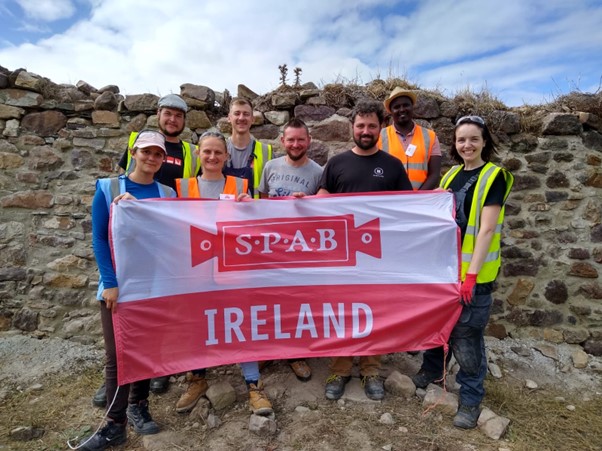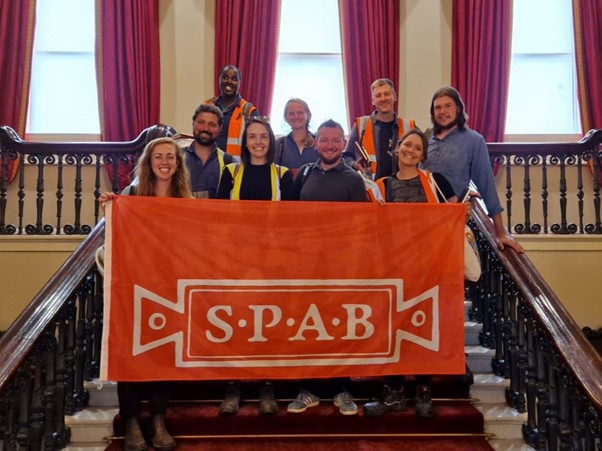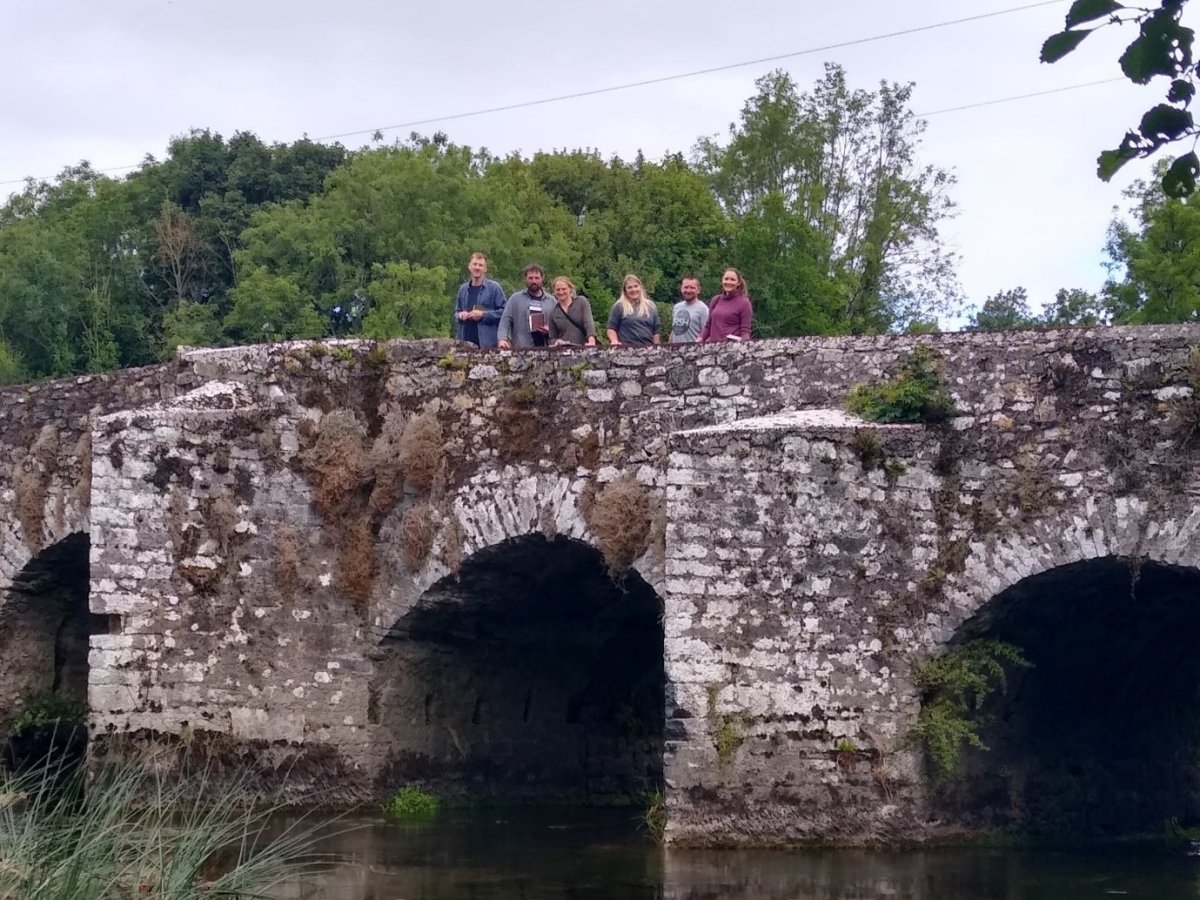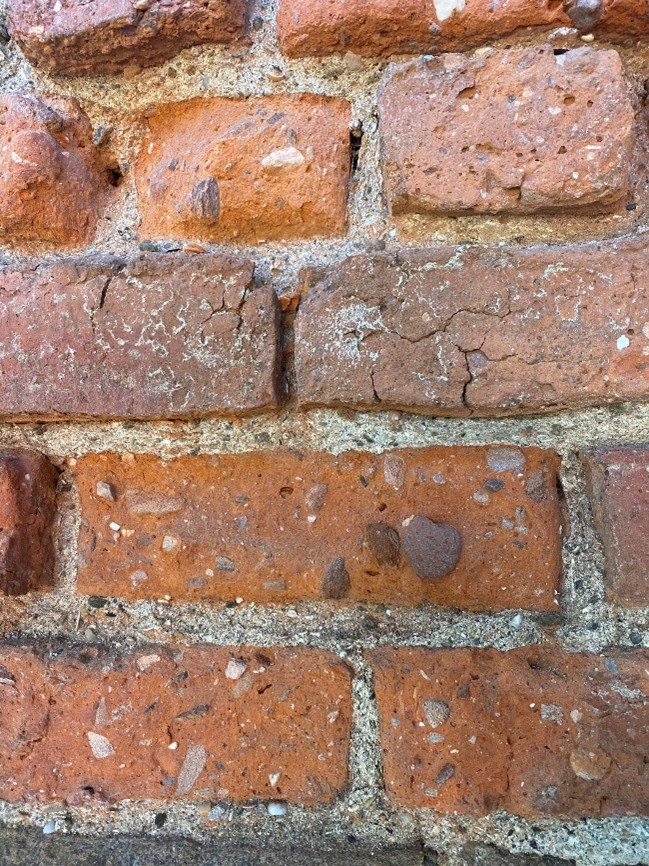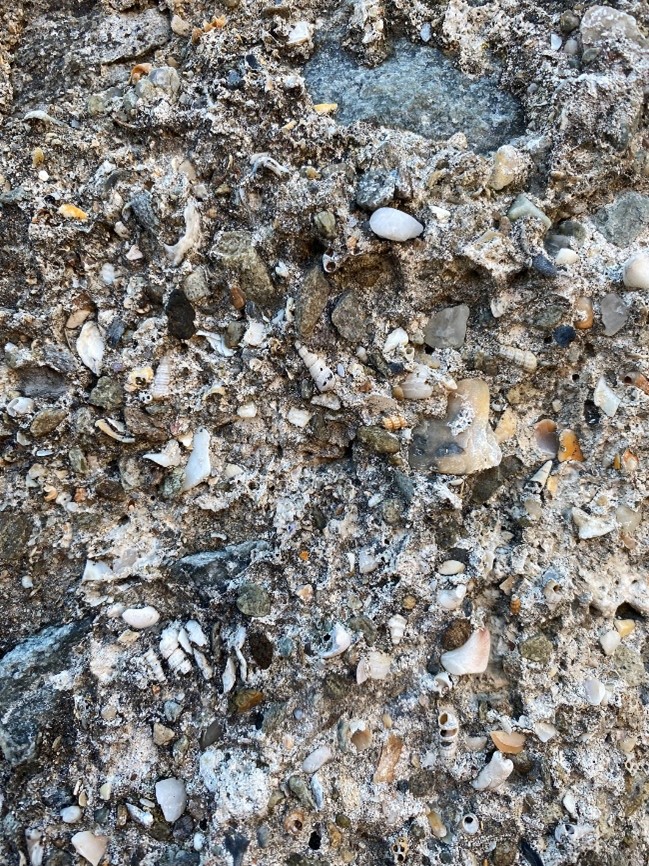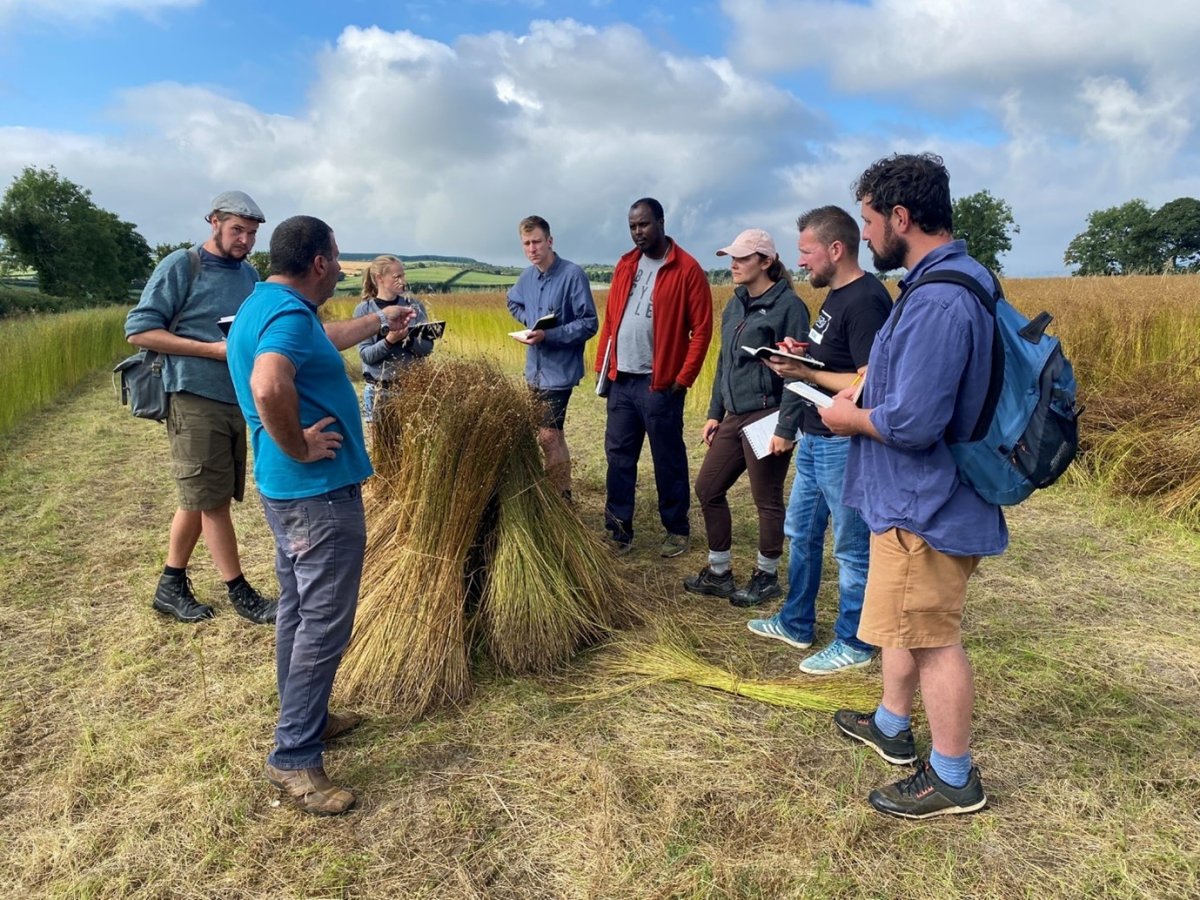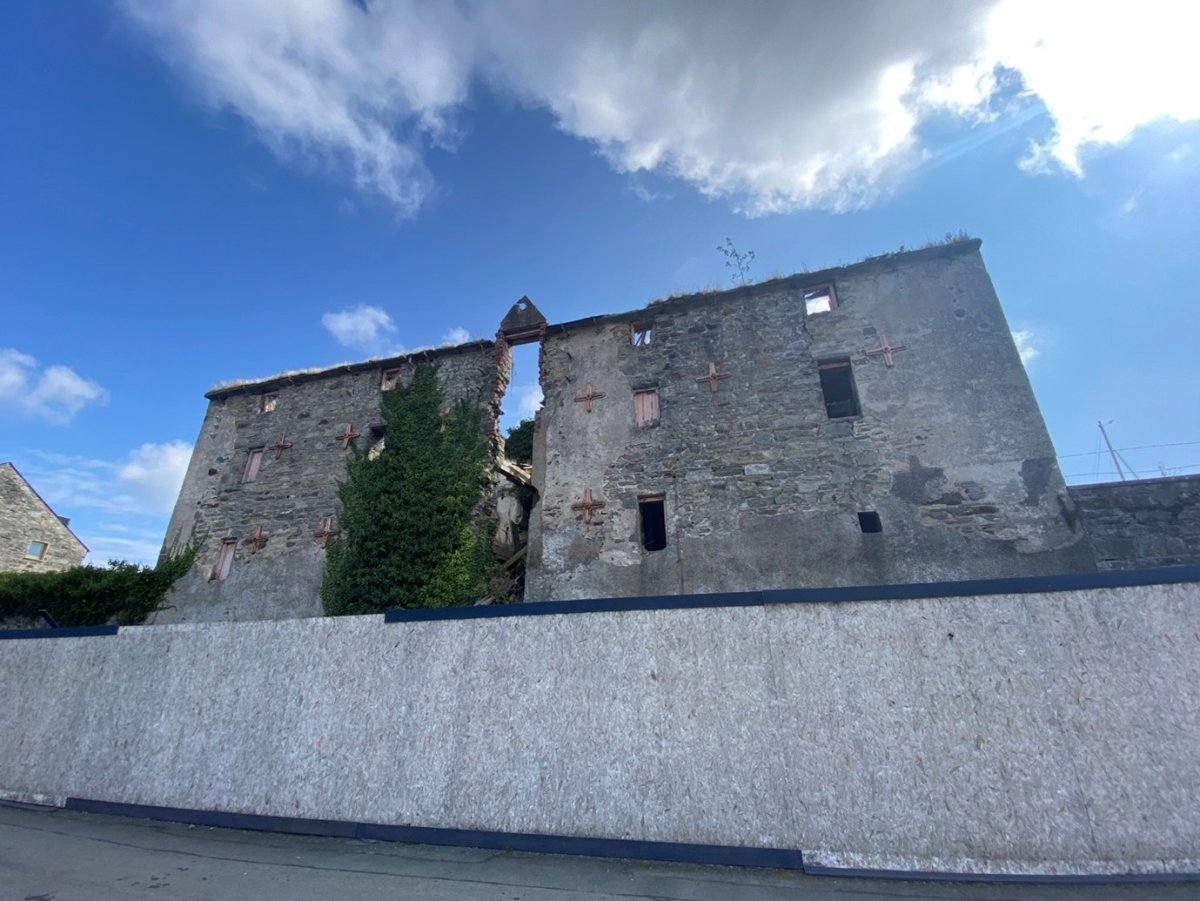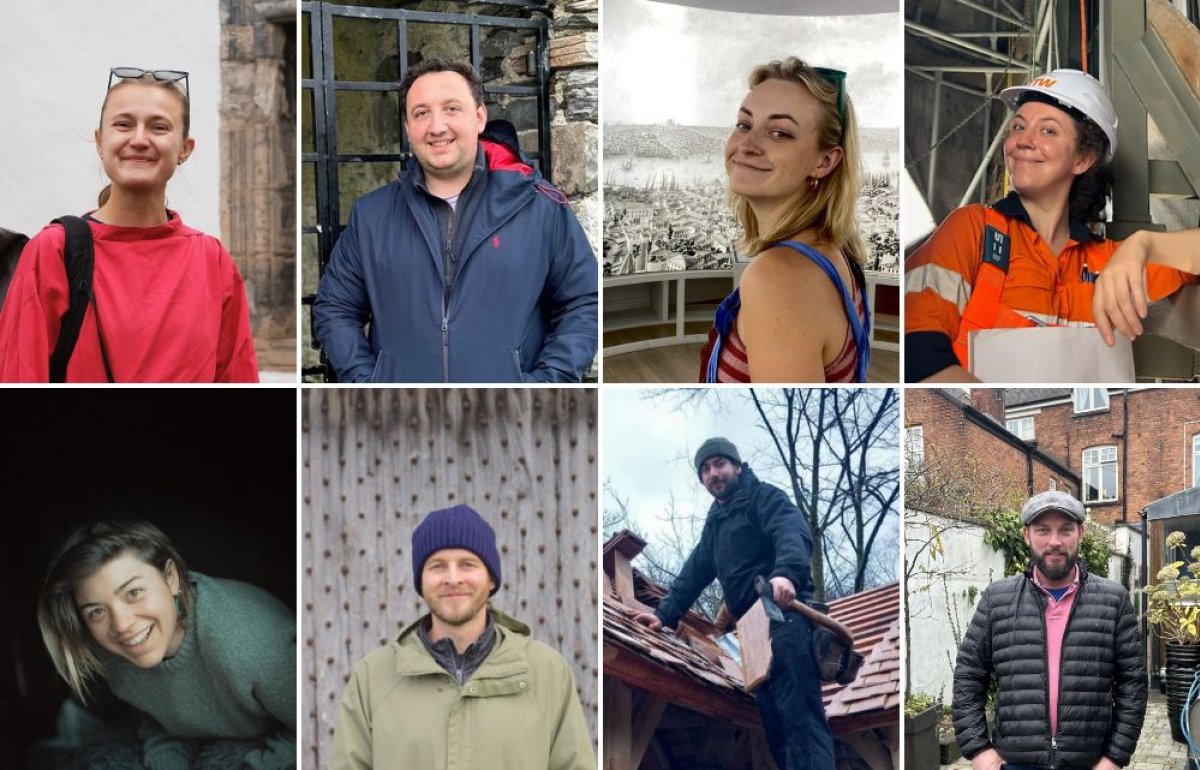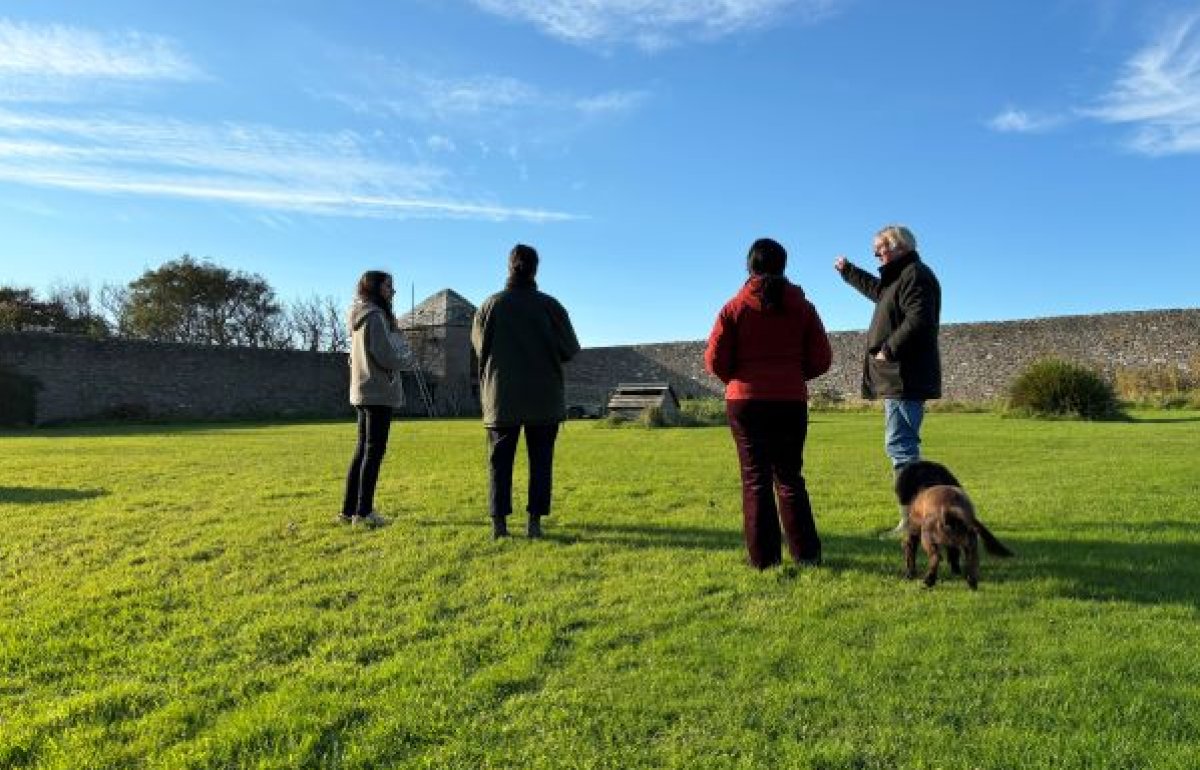SPAB Scholars: Ireland, close to home but a long road ahead
Share on:
2022 SPAB Scholar Serena Gildea is an engineer from Donegal. Here she explores both successes and challenges facing historic buildings and traditional crafts across the island of Ireland.
As we closed in on the final month of the Lethaby phase of our SPAB Scholarship, we sailed from Holyhead to Dublin Port for 18 days of traveling around the island of Ireland. Our itinerary included meeting and learning from a number individuals, organisations and SPAB Scholars and Fellows as they promote the SPAB Approach, and good conservation techniques in general, across the width and breadth of the island.
We arrived into Dublin Port on a dull overcast day in the height of summer and were met immediately by a very confused Garda who quickly scanned our very large, very full, seven-seater car and quizzically asked us where we were from. The answer he received was not quite what he expected and sounded more like the start of a good joke than the truth of an English man, two Irish women and a Scottish woman but alas he took a deep breath, gave us an odd look and told us to ‘go on’.
SPAB Ireland Working Party L-R: Sinéad Scullion, Owen Bushell, Katie Hood, Jacob Long, David McFerran, Steve Hogarth, Daahir Mohamed, Serena Gildea. Credit: Serena Gildea
We spent time in Counties Antrim, Carlow, Kilkenny, Derry, Donegal, Down, Dublin and Tipperary, not in that order thankfully, ending with the BLFI (Building Limes Forum of Ireland) Conference in Belfast. I won’t be able to include everything but I’ve outlined a few of the projects we were invited to view and discuss, as well as some of the people we met along the way.
In Dublin we met past Scholar Tríona Byrne, a structural engineer, for a review of the work she is doing at the Clock Tower building at Grangegorman, Co. Dublin. This early 19th-century building has been laying vacant for a long number of years and is part of a much larger site with 11 Protected Structures in total. A protected structure in Ireland is the equivalent to a listed building in the UK but does not have a hierarchy system within it. We also had a walking tour of Dublin City ending in Dublin Castle.
SPAB Scholars and Fellows with Tríona Byrne at Dublin Castle. Credit: Serena Gildea
In Kilkenny and Tipperary we met up with Scholar Aoife Murphy, also a structural engineer. She is working across the south of the island and brought us to some of her current projects including a masonry arch bridge with breakwater erosion issues, loss of mortar and vegetation issues. We then went on to view church ruins in need of stabilisation and finished with a walking tour of Kilkenny city.
SPAB Scholars and Fellows reviewing erosion of breakwater at Ennisnag Old Bridge with Aoife Murphy. Credit Serena Gildea
In Donegal we met with Fellow Eoin Madigan, a stone mason, Scholar Jo Mitchell, an architect, as well as thatcher Ivor Kilpatrick. We spent two days with Eoin at Ards Friary helping repair a portion of an overgrown 18th-century walled garden. We discussed the issues and plans to bring the kitchen gardens into use again and the need for extensive community involvement to bring this project to fruition. Eoin is an advocate for education and is proposing a training day at Ards to help the Friary bring life back into the garden.
Our day with Jo was spent in the historic town of Ramelton, which is shortlisted for the SPAB Sustainable Heritage Award this year. The old Guildhall has already lost most of its beautiful mixed shell dash and the soft clay bricks are now visible externally and weathering quickly. I’m looking forward to catching up with Jo in the future to find out what the final plans were for conserving the elevations.
soft handmade clay bricks with rounded stone inclusions. Credit: Serena Gildea
Remains of a mixed shell wet dash. Credit: Serena Gildea
Finally we spent a morning with Ivor Kilpatrick, a second-generation Master Thatcher currently training his son in the craft. He currently grows 40 acres of thatching material – predominately Rye and Flax – in Donegal and has a full year of work ahead of him. In contrast to our visit earlier this year with Master Thatcher Alan Jones, working on a roof in West Wales, it was interesting to see the similarities and differences. Ivor showed us the harvesting aspect of the craft and we discussed the issues facing the business and the need to cut or pull the material at the correct time to ensure its longevity as a roofing material.
SPAB Scholars and Fellows in a partially harvested field of flax in Co. Donegal with Thatcher, and grower, Ivor Kilpatrick. Credit: Serena Gildea
As we travelled through the countryside, having viewed and discussed many projects along the way, I am left with hope for the derelict homesteads and buildings that stand on the verges of green fields, within farms and on main streets across the country.
However, I fear we have a long road ahead. We saw some protected structures being left to fall into disrepair by their owners. There are laws in place that can see building owners prosecuted for their actions, or lack of, but are not being enforced. It is infuriating to see my local history and our built heritage fall into disrepair and reach a point in which they will, if left as is, disappear within my lifetime. I know there is no easy solution but I may now be able to form a small part of it following my SPAB Scholarship and I will be forever grateful for this opportunity.
Warehouse Building in need of repair and good conservation techniques to bring it back into use, The Quays, Ramelton. Co. Donegal. Credit: Serena Gildea
Could you be a SPAB Scholar? Applications for our 2023 Scholarship are open until 25 October 2022. Architects, building surveyors and structural engineers who have completed formal training and have experience working in their field are eligible. Find out more about the SPAB Scholarship.
Sign up for our email newsletter
Get involved

